‘My dream was to ride the most beautiful bikes’

MCN catches up with Simon Crafar, the Kiwi who competed against, and beat, the best in the world
Simon Crafar is known by younger race fans for his in-depth MotoGP tech analysis across race weekends and pre-season testing. But for those who are a little older, he’s the New Zealander who beat Mick Doohan in his prime along with some of the very best riders to have graced the world championship paddock.
MCN caught up with Crafar to reflect on his incredible career.
From New Zealand to the UK
Crafar’s journey started back home at a motocross event, on a farm bike… “I wore a rugby jersey with jeans and a cheap open-face helmet,” he recalls. “I don’t even think I had gloves. I didn’t know what I was doing!”
Crafar improved on a better bike and was inside the top 10 in the North Island of New Zealand before switching to road racing and winning the 250 production title aged 19. As a result, he was invited to contest the Suzuka 8-Hour onboard a Yamaha OW-01.
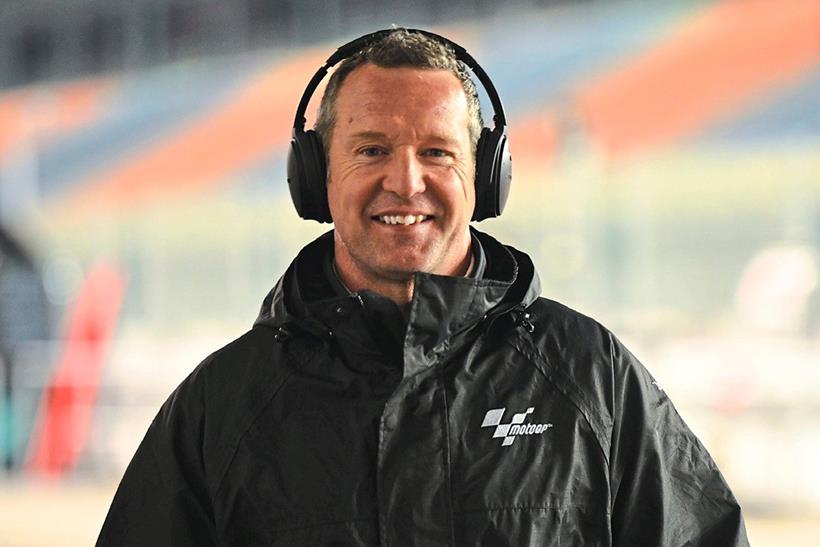
‘By the end of the year everybody knew I was a threat, which was a good feeling’
Crafar was undertaking an apprenticeship with Mike Webb (current MotoGP Race Director) when he was offered a ride by Yamaha Malaysia. He’d win the Malaysian Superbike Championship in his first full campaign in 1991, with racers Mark Forsyth and Tim Wild telling Crafar he was ‘fast enough to mix it with the British’.
“I bought a plane ticket, and took £500 for tyres for a one-off ride on an RC30 built by Ron Grant. I did one hour at Cadwell in the freezing cold and Ron had this big grin looking at the stopwatch. We did the Sunflower that weekend and then the Brands Power Bike event.
“I remember trying to force it past Ron Haslam on the Norton entering McLaren, but I lost the front and destroyed the bike. It was too early, not enough heat in the tyre. But it did turn into a job with Honda UK in 1992!”
Alongside British Superbikes, Crafar competed for Rumi Honda at selected World Superbike rounds, giving him a taste of the world championship. He wanted more, turning down a new BSB contract despite not having a ride.
“I told Honda chiefs Bob McMillan and Neil Tuxworth, ‘I’m bored here and if I’m bored, I’ll chase girls and drink’.”

Taking it to a world level
The call eventually came from Peter Graves and Harris Yamaha in the 500GP class, while Crafar also competed in the 250GPs along with several rounds of WSBK.
“Harris was the team with the smallest budget. We had two sets of tyres per race weekend. You had to save one for the end of qualifying and then one for the race, which we’d use again at the next meeting until qualifying. I finished ninth at Assen like this! That was unheard of for a Harris rider… we all dreamt of a top 10 so I was over the moon.”
A full-time WSBK ride with Rumi Honda followed, proving that Crafar’s decision to leave BSB was the right one.
“It’s the decision that I’m most proud of in my whole career because without that, if I didn’t have the determination, belief, or risk in me, I wouldn’t have got to the world championship.
“It’s really important to tell the young guys that really want to go to there, don’t let money or comfort distract you from what you want.”
All I was doing was running away from Mick Doohan’
Working alongside crew chief Merlyn Plumlee, Crafar finished fifth (1994) and sixth (1995) onboard the RC45 before switching to teams Muzzy Kawasaki.
A tricky year followed with the all-new ZX-7R, which had “an excellent chassis, but no engine development”.
Crafar scored seven podiums in 1997, but bad luck cost him wins. At Sentul, Crafar’s tyre delaminated in race one, then he was taken out by John Kocinski with two corners to go in race two. Carl Fogarty won, but handed the trophy to Crafar.
“Until then I thought you made your own luck, but that run showed me that you need some luck as well! The idea is you that keep banging your head against the wall until everything falls into place, but in this case it didn’t.
“Yet by the end of that year everybody there knew I was a threat, which was a good feeling.”
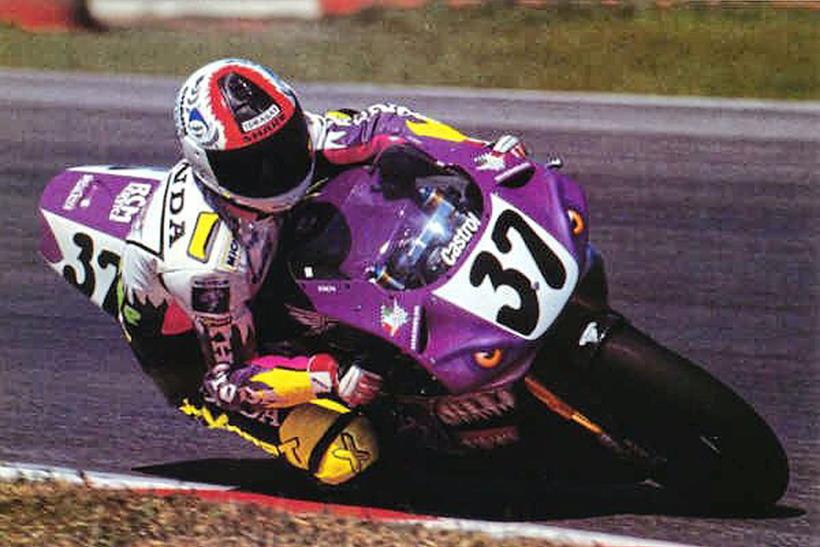

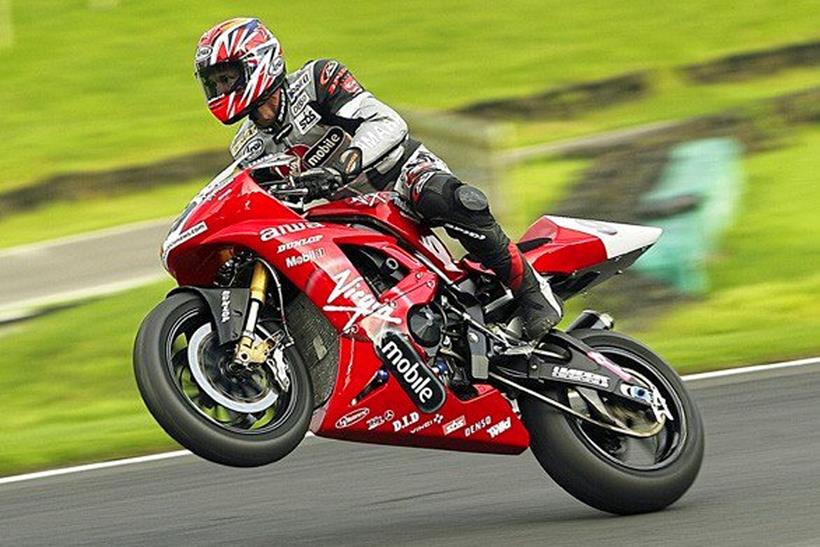
The 500cc highs…
Crafar was then snapped up by the Red Bull Yamaha team. His first podium came at Assen, but it was the British GP at Donington Park one week later which placed Crafar into the history books.
Crafar did what few could, beat Doohan and Honda. Doohan won eight races that year, while Crafar’s win, his one and only GP success, was the only non-Honda victory.
Crafar took pole and crossed the line with a stunning advantage of 11.530s. It was Yamaha’s first victory since Loris Capirossi’s win at Eastern Creek in 1996, and Dunlop’s last in the class.
“I saw Mick was a little hesitant in the opening laps, so I knew I needed to open as big of a gap as possible before he got up to speed properly. All I was doing was running away from Mick.
“When I realised how big the gap was, I thought, ‘Shit, he’s not going to catch me’, and I never thought that would be the case. I rolled off slightly for the last bit but then got scared as I started to focus. It would be easy to crash, then you hear the engine, oh it’s going to break!”
It was a special day for Crafar, Yamaha and Dunlop, but with success comes questions asking how it happened, with many pointing at the tyres.
“I have a little bone to pick… I was the only Dunlop rider at the front.
My teammate, Regis Laconi, a good rider who won a GP, was nowhere near the podium with the same equipment. It’s the full package coming together. I figured out how to ride the bike, I rode great that day and everything else was there to allow the result.
“Only a few can ride like that everywhere and keep it up for years. I didn’t, but Donington was one of those exceptional rides. It’s tapping into something that Mick and Marc do so regularly and the rest of us get to do a few times.”
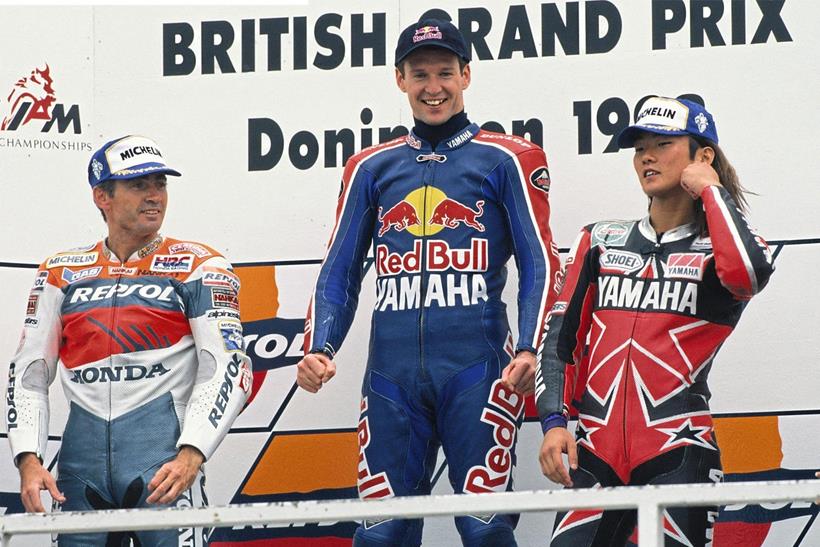
And the 500cc lows…
The joy of 1998 didn’t last. The team switched to Michelin in 1999 and Crafar struggled to adapt having used Dunlops since 1996.
“The decision was made, and I was positive because Michelin were the champions, more consistent with more development behind them, but I couldn’t ride the way the tyres needed me to ride.
“I was 30. When you’re younger you can adapt to different stuff. That’s why I admire Valentino for riding over such a long period of time and being able to adapt at an older age. It caught up with him eventually, but he adapted 10 years later than most people can.”
A plea to the team to change back to Dunlop was refused and Crafar departed after six rounds, withdrawing from the Catalan Grand Prix. Aside from a one-off ride with MuZ at Donington, Crafar’s GP career was over.
“It was heart-breaking because you put all your life into one thing, and everybody had been so positive and supportive; they want you to ride their bike and use their products. And then suddenly…
“When I said to Peter Clifford that I can’t adapt to these things, can we change back to Dunlop? He told me the truth really bluntly; ‘Simon, it’s easier to change the rider than the tyres.’ Then it hits you that the world isn’t quite what you thought.”
What could have been…
Crafar contested the opening two WSBK rounds in 2000 with Honda onboard the VTR as a replacement for the injured Aaron Slight, before returning to Kawasaki at Hockenheim. He was back on the ZX-7R and he was excited, thinking that the bike could “rescue” him. But while it looked the same, the machine didn’t feel the same due to geometry changes.
“I told my lead engineer and he said, ‘yes, we’ve progressed since then’. I asked to put one bike back to my old setup, I begged for two days, but he refused. For me, this was ego.
“He didn’t want me to jump on the old setup, go faster and make it look like his two years of work was a waste to the Japanese. I was so disappointed. He’s probably the only guy from my career that I won’t forgive.
“He put his career ahead of mine. All I needed was a break, something to shine results wise, and it could turn into something bigger. If we changed the setup and it didn’t work, and riders need to be shown they’re wrong, I would have swallowed it, ‘okay man, let’s find the right way’.
“I rode uncomfortably all weekend and said goodbye without a result. It’s good to tell this story because people can understand there’s plenty of egos working in different areas. It’s not just riders.”
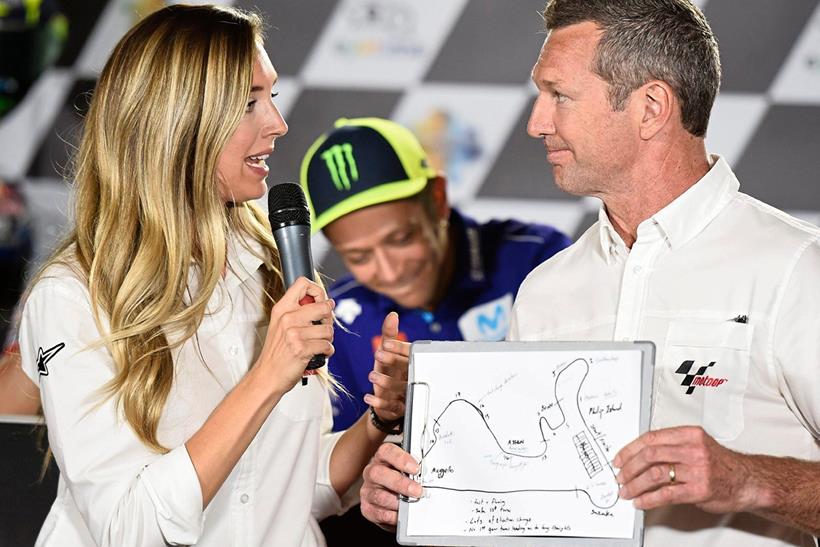
Looking back…
Crafar claimed ten World Superbike podiums and three 500GP podiums, including his famous Donington win, and finished fifth overall in WSBK in 1997 – but he never got to take that world title
“I never dreamed of being world champion,” he admits. “I think that’s partly why I didn’t achieve it; if it’s not your dream, you won’t make it. My dream, because I loved bikes, was to ride the most beautiful bikes, the factory ones you saw in magazines, on the best tracks in the world against the best guys in the world, and have it so me and my parents didn’t have to pay for it.
“I got to do that and when I got there, I didn’t realise they paid you too! It wasn’t for as long as I wanted, but I got to realise my dream.”
Are there any regrets?
“That I went along with, and thought it was a good idea, to change tyre brands. It was the beginning of the end for me and that period of trying to figure it out broke me and my confidence. When that happens, it’s hard to get back up to where you were before.
“The change was the end. It broke my heart. It broke everything. It was silly of me. Wayne Rainey warned me, and I didn’t listen. He’d been through it. I didn’t understand until I went through it. I wrote to him years later, thanked him and admitted that I didn’t listen and that I regretted it.”
LIFE AFTER RACING – Teaching, tech and dog rescue
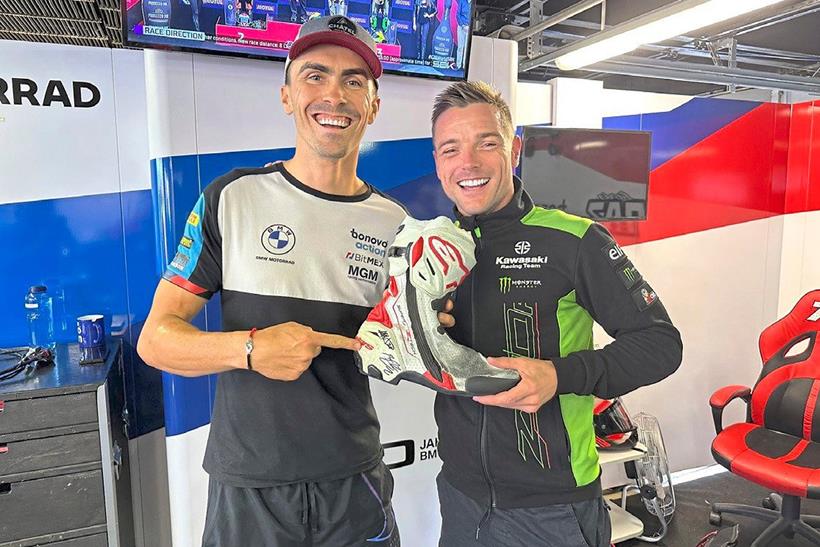
Since retiring, Crafar has worked to help others, whether it be motorcyclists and racers, MotoGP fans or even our four-legged friends.
Crafar launched MotoVudu: Dark Art of Performance to help fellow bikers and racers, through on-track tuition, books and videos.
“After Suzuka I stayed in Japan for the All-Japan Superbike Championship. I was learning, it was brutal with no electronics or tyre warmers. I did seven rounds, and had seven highsides. This is why I created MotoVudu because I didn’t want people going through that.
“You think that by leaning over and opening the throttle you go faster, but big bikes don’t work like that, and I didn’t know – nobody told me. So, I really battered myself, I was lucky not to break anything, but I cried myself to sleep some nights!”
Crafar now works for Dorna and provides fans with helpful insight and analysis from the tech side of MotoGP, as well as using his riding expertise to report on what’s happening on the track.
“My aim is to share the information and do it as accurately as possible so that people really understand what’s going on. It’s important that people hear the truth, whether they like it or not!”
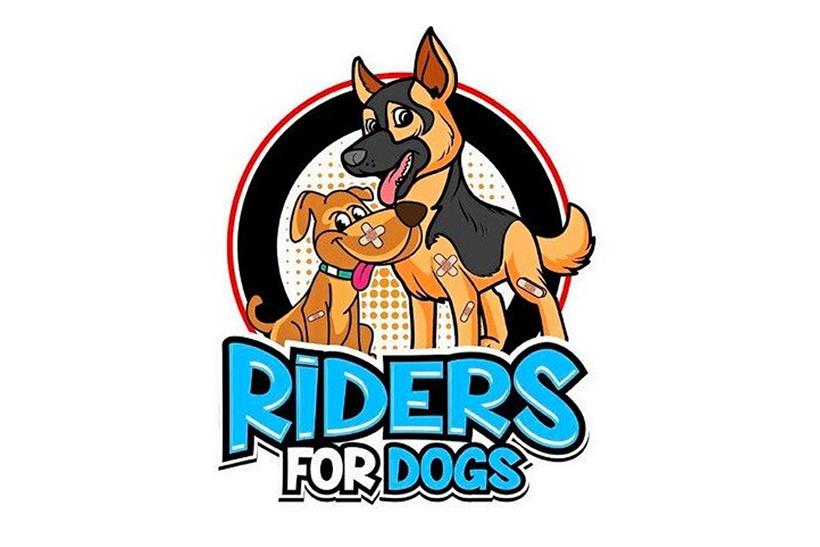
Through Riders for Dogs, Crafar raises money for dog rescue organisations by auctioning items donated by racers. Recent items have included Pol Espargaro’s helmet from the season finale at Valencia, Loris Baz’s race boot used in Mandalika during his incident with Alex Lowes (both men signed the boot), and paddock passes courtesy of LCR Honda.
Crafar is restoring a Castrol liveried Honda RC45 which will be auctioned off to raise funds once it’s complete.
Search @RidersForDogs on social media to find out more.
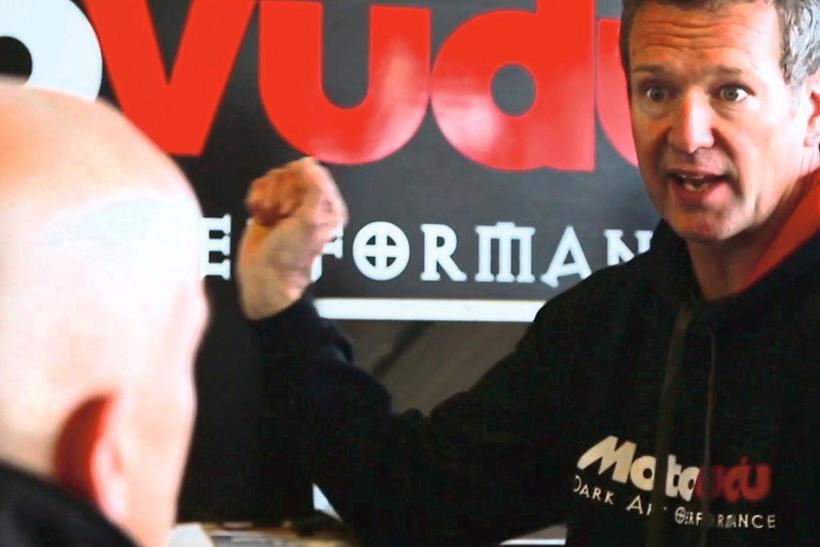
Subscribe to MCN and get more brilliant features to enjoy every week!













